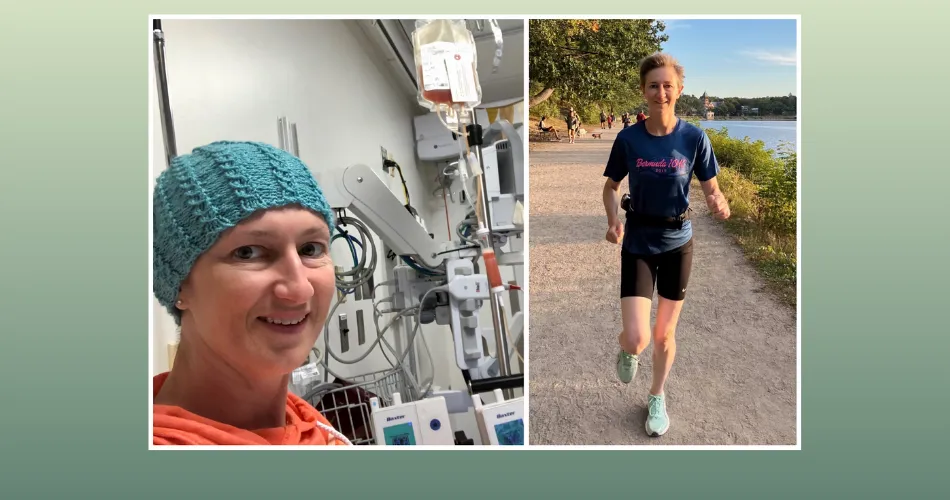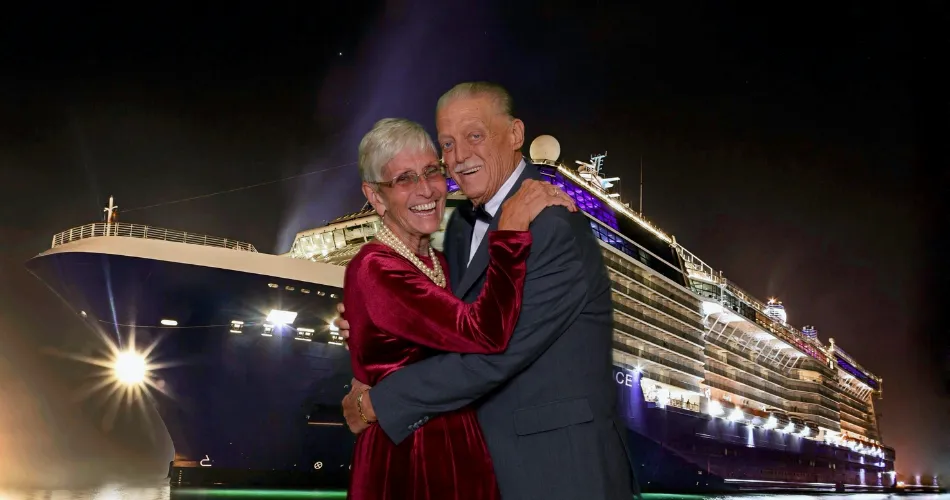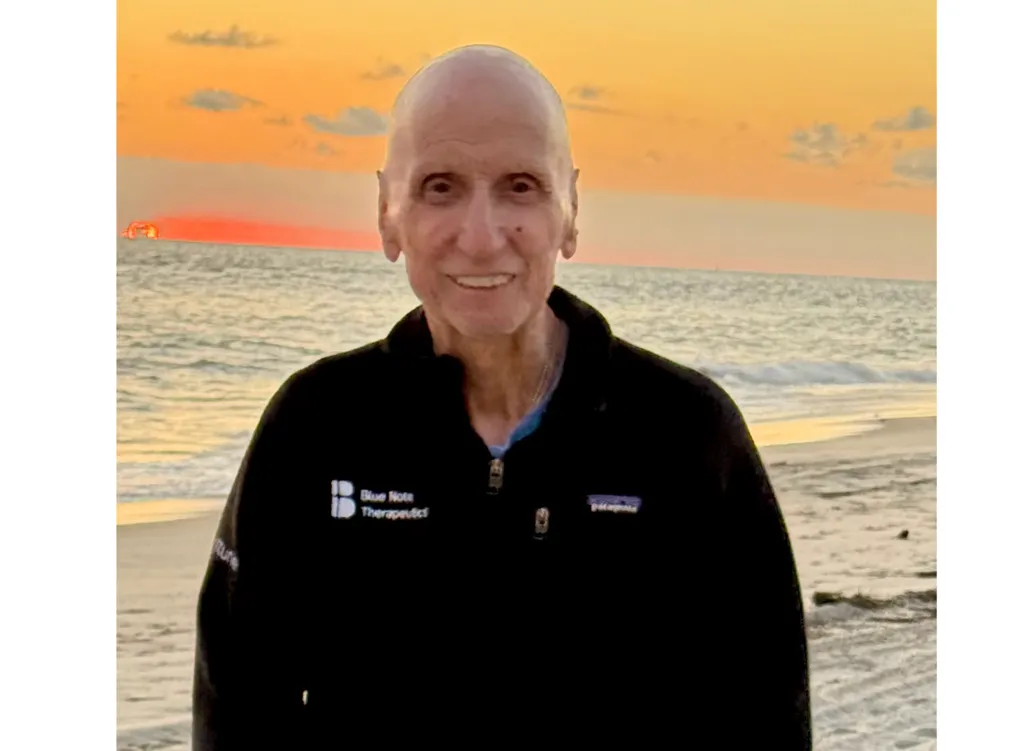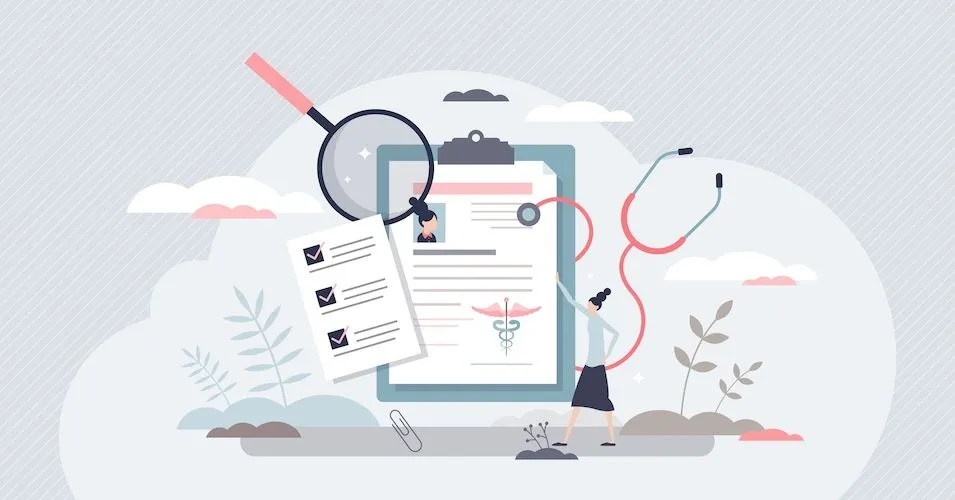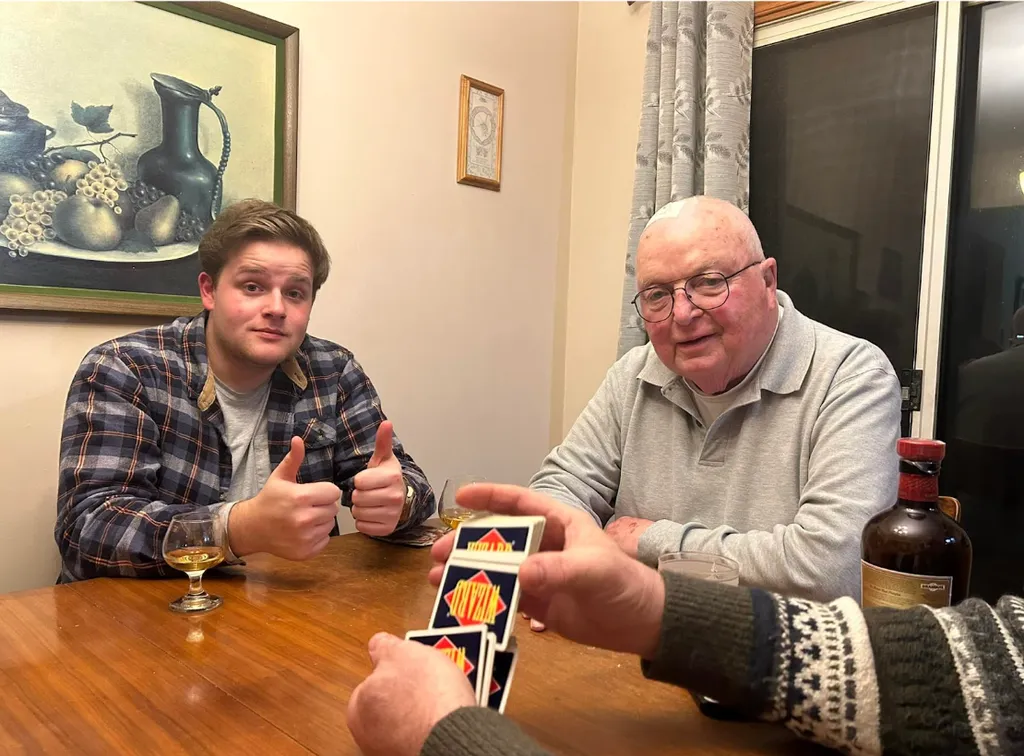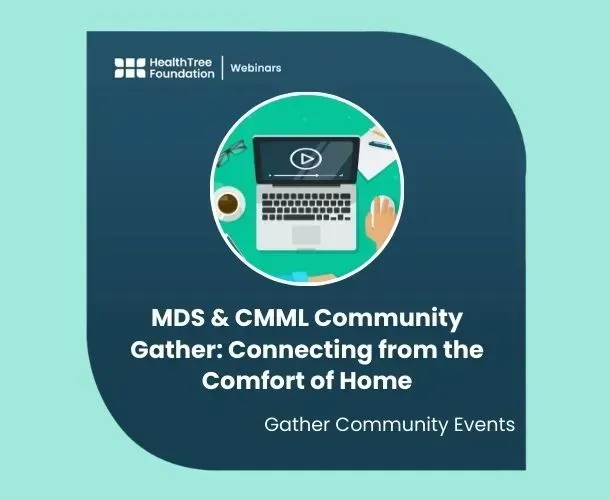Healing the Body and the Soul: Becoming a Patient Again
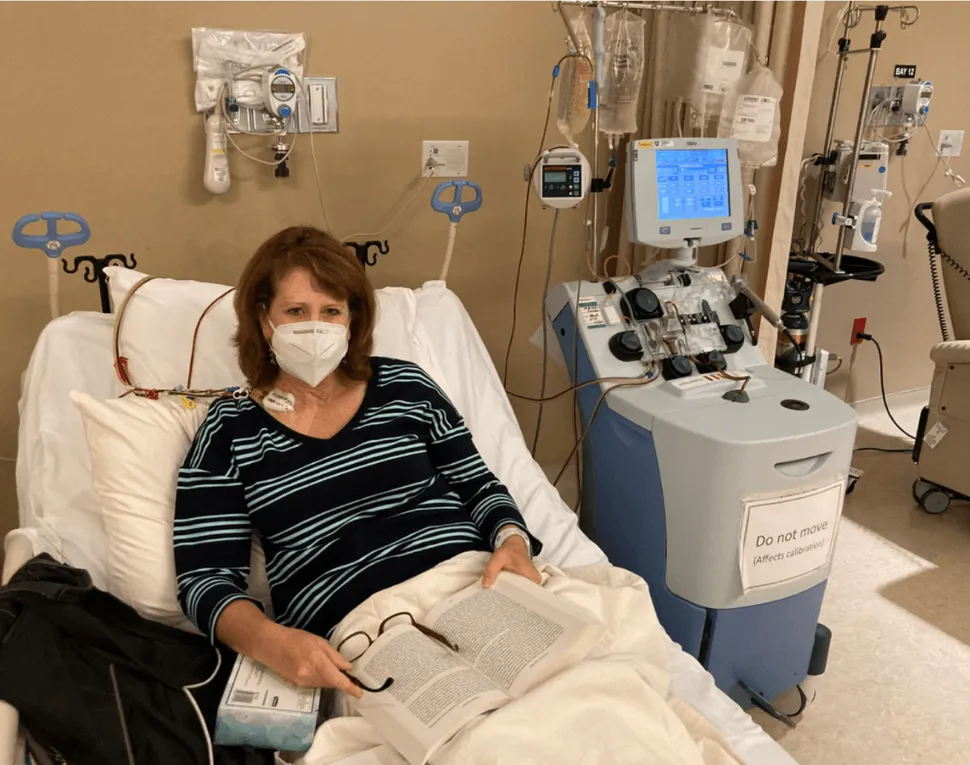
I was in the clinic recently getting an infusion when another patient in a seat nearby seemed like he wanted to talk. Bob approached me, saying he recognized me from my work at the HealthTree Foundation. He said that because we had Doug Sborov, MD share Huntsman Cancer Institute’s open clinical trials in one of our new HealthTree radio shows, he had chosen to join a clinical trial.
“I joined the trial because of you,” he said. “I wanted you to know that you’ve made an important difference in my life.”
I was very moved. I started patient advocacy by wanting to find a cure for my blood cancer to heal the body. What I didn’t realize is that on this journey, I would also find answers about how to heal the soul.
As I head now back into treatment after a relapse, I wanted to share some thoughts about being a blood cancer patient. I don't often share what's happening with me personally, but lately I’ve been reflecting on this incredible journey to turn something awful into something useful. My personal goal is still to find (and receive) a cure for my multiple myeloma and help others with blood cancers find a cure as well.
Congratulations, You Have Cancer
I may have shared this with you before, but it bears repeating because it fundamentally shifted my perspective on having blood cancer. When we lived in Mexico, my husband Paul told a business associate that I had cancer. He responded by saying “Congratulations.” Paul was a little shocked by that response and asked him to elaborate. His son had died during a routine adenoid surgery, but upon his death, the family donated his organs to save the lives of other children. He then started an organ donation foundation and has since saved the lives of many children. He said:
“Now you have the opportunity to see the world differently and to serve in ways you could not have before.”
His comment helped me see cancer as an opportunity to see the world differently and serve people I would not previously have a connection to.
Paul is an optimistic entrepreneur who loves solving problems. Since we have been married, he has launched or invested in more than 150 technology companies. After my initial diagnosis of multiple myeloma and treatments, he suggested we treat this cancer like we would a startup. Let’s identify the key problems that have not yet been solved and start filling in the gaps.
For the last 9 years after I finished my initial treatment, that’s what we’ve done. I started with the Myeloma Crowd Radio program and added more programs over time – the Myeloma Crowd Round Tables, the www.myelomacrowd.org website, the Myeloma Coach program and our signature HealthTree Cure Hub and HealthTree University programs. In early 2021, we decided to create a new division of the HealthTree Foundation. We took the programs we created for multiple myeloma and personalized them for people with acute myeloid leukemia. We have been running the HealthTree for AML community website, the HealthTree Radio for AML program and HealthTree University for AML since July 2021. The work has been intensely rewarding, and we have heard from thousands of patients who appreciate the effort and support that we provide.
I was able to do this because I’ve been incredibly fortunate. My initial treatment was aggressive: tandem autologous transplants, a year of consolidation treatment, then another year of maintenance therapy. My doctor, Guido Tricot, MD, PhD had come from UAMS where this was a standard protocol. What made me comfortable with the protocol was the data held by UAMS, his experience level, my prior experience with my brother-in-law’s AML and my younger age.
Nothing else at the time had the potential of being curative. I am forever grateful to him for his expert advice. The strategy was to give me the longest possible remission until something new could be discovered. To me it was better to have two back-to-back transplants feel like one treatment vs. getting a single transplant and then having a salvage transplant a few years down the road. Losing my hair and feeling the effects of the transplant was not easy and not something I was anxious to repeat.
Because maintenance therapy was not popular at that time, I stopped treatment after 2012. After my transplants, I had a deep sense of urgency and the feeling that I would quickly relapse. I wanted to plan accordingly for my next step.
I called eight facilities trying to learn more about their clinical trial and only got a call back from 2 of the 8. I realized that finding and joining a clinical trial was very hard. Out of the 350 open AML clinical trials on www.clinicaltrials.gov, how is a patient to pick one that is personally relevant? That experience was the catalyst to create the myeloma and AML radio programs, to help patients understand open trials by talking directly with investigators running those trials.
A Great Sense of Urgency
That feeling of urgency has stuck with me. I always feel like I’m playing “beat the clock” to find something that looks remotely curative. Of the many cancers to have, at some level I feel lucky to have blood cancer because so much incredible innovation is happening in the space. At the same time, while I am intensely grateful for the advances and longer life these medicines and new approvals are providing, I am not looking to be on constant therapy for the next 30+ years of my life and I do not want to live with cancer as a chronic condition. I want a cure.
That was reflected in our first crowdfunding campaign in 2015 where the theme was “Can’t Wait for a Cure.” We believe that patients are essential stakeholders in finding a cure. We can donate to research, we can participate in clinical trials and we can share our stories to find better data and uncover new hypotheses.
In 2015 we selected two projects to fund through the help of our patient and scientific advisory board’s help – a CAR T therapy targeting CS1 and BCMA and a T cell immunotherapy called MILs. We raised $500,000 for these projects and we donated 100% of it to the researchers. This was before there was any mention of CAR T at conferences like ASH or ASCO. Our unique crowdsourced funding approach worked.
In 2015, I hired our first direct employee at that time, because I was trying to do too much alone. My husband had graciously given us free office space until that time, but it was time to make our way as a viable non-profit, so we moved into a small office next door. Everything done to build the foundation to that point had been funded by our family (and our kids’ college funds.)
Can I Relax Now?
With a little help, in 2015 I started feeling like maybe I could take a mental break and not think about cancer 24 hours a day. Perhaps I would be one of those lucky myeloma patients “cured” by the aggressiveness of the tandem transplants. (There are a small fraction of patients who have achieved what is called a “functional cure,” or the absence of disease without treatment for 20+ years.)
I am clearly not meant to be complacent. My myeloma began returning in 2015 with a “faint band” appearing on my kappa numbers. My doctors and I have been watching the rate and rise of the return of my m-protein and my kappa and kappa/lambda numbers at each lab visit. It has been growing incredibly slowly but consistently growing. Without any CRAB criteria, I was having a biochemical relapse.
Now, Now, or Maybe Now?
Every lab became a decision-making threshold. Do we do something now or wait? Will we wait too long and then I have new bone lesions? What is the number we hit that makes the decision for us? What about now? Do we do another MRI? Do we wait for the next set of labs? Ironically, as my doctor’s comfort level with my numbers decreased, mine increased. We’ve waited this long, why not wait a few more months? My clinic visits went from every 6 months to every 3 months and then once a month. Ultimately, we agreed together that it was time to do something.
What's Next?
My doctors and I started having conversations about what I should be doing next. Because I had interviewed many investigators, written and shared articles and attended major academic meetings, I understood the science well. I knew what was most effective today and what was coming in the pipeline. That knowledge gave me the ability to ask sophisticated questions during my clinic visits. It prompted me to get second and third opinions. It was a great feeling to know that I had prepared myself as much as I possibly could have.
It was time to make a treatment decision. These decisions are not easy. There is not one “right” path today that will help all blood cancer patients, because these cancers are not a single disease. I wanted to know what was right for me personally.
I gathered multiple expert opinions and those opinions varied, making it an even more challenging decision. One doctor suggested I should do a triple combo because it would likely put me into a multi-year remission. One doctor said that Revlimid alone might be sufficient for low-level myeloma. I flew to the Hutch as COVID was starting to consult with Dr. Damian Green on a trial he had open that I qualified for. We had a great discussion about the status of CAR T and if I should go ahead or wait to use that therapy. Another doctor suggested I may want to wait for CAR T to evolve while the other said to go ahead. Dr. Sborov noted that my biggest challenge would be the number of choices in front of me.
I’ve done exhaustive homework over the last 11 years. I’ve met with top global experts. There was nothing more I could have done to research my options do on the side of science. And while I am a hearty believer in science, I am an equal believer in faith, so I combined the two to make my decision about what to do next. In that process, I became confident in what to do next.
The decision to enter a CAR T trial was now an easy one but jumping back into treatment was not. I found myself back in the clinic for more bone marrow biopsies, MRIs, PET-CTs, echo tests, pulmonary tests, 24-hour urine tests and other testing to see if I would meet the inclusion criteria. Every time I walked in the door of the clinic, it was a stark reminder that I was a patient once again.
Getting into a clinical trial is never easy. I initially failed the screen for the trial because of the difference in how the local lab counts myeloma numbers and how the trial sponsor counted the numbers, but within a month, my numbers continued to increase and I was able to be rescreened for the trial. Now that I qualified, treatment would be part of my life once again.
I started a triple combination as bridging therapy and it was a fresh reminder that dexamethasone is the absolute devil. The physical effects of treatment are so very real: the fatigue, the GI issues, the chemo brain, the internal shaking, the feeling that you are not quite yourself and you’d best not meet anyone new because they would wonder why you were so frank or suddenly without a filter. The physical was only to be matched by the emotional effects.
Emotional Ups and Downs
We all know that blood cancer is a mind game. Like you, I get stressed before my lab visits because you never know what those results will look like. My friend Cindy says it’s like getting a random red card or a green card after a clinic visit, and the uncertainty can be quite disturbing. As blood cancer patients, we need as much soul healing as we do physical healing. We need healthy and productive ways of coping with those feelings.
It’s been a real mental transition to move from feeling like a “regular person” to becoming a patient again. As I lay on the hospital table to get a PICC line installed, the reality of it hit me. I was glad that my face was covered by blue sterilized paper so the team couldn’t see the tears.
Outward Service Heals the Inner Soul
The other day Paul shared a thought with me that “outward service heals the inner soul.”
The truth of that statement has helped me cope in positive ways. I’ve spent several days this week talking with newly diagnosed or relapsed patients. I was energized and uplifted to provide them with help and connections to make their experience just a little easier. I love helping you. It is healing.
A Greater Sense of Gratitude
Over the years, my sense of gratitude has deepened, and I constantly reflect on how fortunate I am. My husband has helped me every step of this journey in the kindest ways possible. He is amazing, both in and out of a crisis. Creating the HealthTree Foundation together has been a deeply satisfying and rewarding partnership of collaboration. My children have been understanding and involved, contributing their time and talents to the growth of the HealthTree Foundation. I have watched them mature as they have learned to serve you.
Our HealthTree Foundation team has grown significantly over the last several years and I am so grateful these talented people have chosen to share their time and talents with me and with you. Their commitment to helping you is unparalleled.
I am intensely grateful for the experts I now consider to be my friends, and for my doctors who have helped me navigate treatment decisions, the clinical trial process and treatment itself. I want to share a special thank you to Dr. Sborov (who has been extraordinary for my recent therapy), Dr. Atanackovic, Dr. Orlowski and Dr. Fonseca. They are gifted, caring and truly amazing.
Our Mexican friend was right, and congratulations were in order. We have come to see the world with a new lens and serve in ways I never thought possible. Having blood cancer has helped me identify new life priorities and has provided a platform for service, bringing me great joy. Regardless of my personal outcome, it has completely changed my life for the better.
I still hear and feel the beating drum to find cures for both myeloma and AML, so I don’t intend on stopping the work we do. We will continue to press forward to find a cure to heal us physically. In the meantime, I invite you to join us for outward service that can help heal the soul by joining our HealthTree Community for AML Chapters and utilizing our tools to share what you’ve learned in your unique journey. We are all in this together.
Becoming a patient again has opened yet another door of learning for me. I’ve noticed that the deeper the adversity, the more profound and memorable the lessons. None of us will go through this life unscathed, but the learning can be eternal.
I was in the clinic recently getting an infusion when another patient in a seat nearby seemed like he wanted to talk. Bob approached me, saying he recognized me from my work at the HealthTree Foundation. He said that because we had Doug Sborov, MD share Huntsman Cancer Institute’s open clinical trials in one of our new HealthTree radio shows, he had chosen to join a clinical trial.
“I joined the trial because of you,” he said. “I wanted you to know that you’ve made an important difference in my life.”
I was very moved. I started patient advocacy by wanting to find a cure for my blood cancer to heal the body. What I didn’t realize is that on this journey, I would also find answers about how to heal the soul.
As I head now back into treatment after a relapse, I wanted to share some thoughts about being a blood cancer patient. I don't often share what's happening with me personally, but lately I’ve been reflecting on this incredible journey to turn something awful into something useful. My personal goal is still to find (and receive) a cure for my multiple myeloma and help others with blood cancers find a cure as well.
Congratulations, You Have Cancer
I may have shared this with you before, but it bears repeating because it fundamentally shifted my perspective on having blood cancer. When we lived in Mexico, my husband Paul told a business associate that I had cancer. He responded by saying “Congratulations.” Paul was a little shocked by that response and asked him to elaborate. His son had died during a routine adenoid surgery, but upon his death, the family donated his organs to save the lives of other children. He then started an organ donation foundation and has since saved the lives of many children. He said:
“Now you have the opportunity to see the world differently and to serve in ways you could not have before.”
His comment helped me see cancer as an opportunity to see the world differently and serve people I would not previously have a connection to.
Paul is an optimistic entrepreneur who loves solving problems. Since we have been married, he has launched or invested in more than 150 technology companies. After my initial diagnosis of multiple myeloma and treatments, he suggested we treat this cancer like we would a startup. Let’s identify the key problems that have not yet been solved and start filling in the gaps.
For the last 9 years after I finished my initial treatment, that’s what we’ve done. I started with the Myeloma Crowd Radio program and added more programs over time – the Myeloma Crowd Round Tables, the www.myelomacrowd.org website, the Myeloma Coach program and our signature HealthTree Cure Hub and HealthTree University programs. In early 2021, we decided to create a new division of the HealthTree Foundation. We took the programs we created for multiple myeloma and personalized them for people with acute myeloid leukemia. We have been running the HealthTree for AML community website, the HealthTree Radio for AML program and HealthTree University for AML since July 2021. The work has been intensely rewarding, and we have heard from thousands of patients who appreciate the effort and support that we provide.
I was able to do this because I’ve been incredibly fortunate. My initial treatment was aggressive: tandem autologous transplants, a year of consolidation treatment, then another year of maintenance therapy. My doctor, Guido Tricot, MD, PhD had come from UAMS where this was a standard protocol. What made me comfortable with the protocol was the data held by UAMS, his experience level, my prior experience with my brother-in-law’s AML and my younger age.
Nothing else at the time had the potential of being curative. I am forever grateful to him for his expert advice. The strategy was to give me the longest possible remission until something new could be discovered. To me it was better to have two back-to-back transplants feel like one treatment vs. getting a single transplant and then having a salvage transplant a few years down the road. Losing my hair and feeling the effects of the transplant was not easy and not something I was anxious to repeat.
Because maintenance therapy was not popular at that time, I stopped treatment after 2012. After my transplants, I had a deep sense of urgency and the feeling that I would quickly relapse. I wanted to plan accordingly for my next step.
I called eight facilities trying to learn more about their clinical trial and only got a call back from 2 of the 8. I realized that finding and joining a clinical trial was very hard. Out of the 350 open AML clinical trials on www.clinicaltrials.gov, how is a patient to pick one that is personally relevant? That experience was the catalyst to create the myeloma and AML radio programs, to help patients understand open trials by talking directly with investigators running those trials.
A Great Sense of Urgency
That feeling of urgency has stuck with me. I always feel like I’m playing “beat the clock” to find something that looks remotely curative. Of the many cancers to have, at some level I feel lucky to have blood cancer because so much incredible innovation is happening in the space. At the same time, while I am intensely grateful for the advances and longer life these medicines and new approvals are providing, I am not looking to be on constant therapy for the next 30+ years of my life and I do not want to live with cancer as a chronic condition. I want a cure.
That was reflected in our first crowdfunding campaign in 2015 where the theme was “Can’t Wait for a Cure.” We believe that patients are essential stakeholders in finding a cure. We can donate to research, we can participate in clinical trials and we can share our stories to find better data and uncover new hypotheses.
In 2015 we selected two projects to fund through the help of our patient and scientific advisory board’s help – a CAR T therapy targeting CS1 and BCMA and a T cell immunotherapy called MILs. We raised $500,000 for these projects and we donated 100% of it to the researchers. This was before there was any mention of CAR T at conferences like ASH or ASCO. Our unique crowdsourced funding approach worked.
In 2015, I hired our first direct employee at that time, because I was trying to do too much alone. My husband had graciously given us free office space until that time, but it was time to make our way as a viable non-profit, so we moved into a small office next door. Everything done to build the foundation to that point had been funded by our family (and our kids’ college funds.)
Can I Relax Now?
With a little help, in 2015 I started feeling like maybe I could take a mental break and not think about cancer 24 hours a day. Perhaps I would be one of those lucky myeloma patients “cured” by the aggressiveness of the tandem transplants. (There are a small fraction of patients who have achieved what is called a “functional cure,” or the absence of disease without treatment for 20+ years.)
I am clearly not meant to be complacent. My myeloma began returning in 2015 with a “faint band” appearing on my kappa numbers. My doctors and I have been watching the rate and rise of the return of my m-protein and my kappa and kappa/lambda numbers at each lab visit. It has been growing incredibly slowly but consistently growing. Without any CRAB criteria, I was having a biochemical relapse.
Now, Now, or Maybe Now?
Every lab became a decision-making threshold. Do we do something now or wait? Will we wait too long and then I have new bone lesions? What is the number we hit that makes the decision for us? What about now? Do we do another MRI? Do we wait for the next set of labs? Ironically, as my doctor’s comfort level with my numbers decreased, mine increased. We’ve waited this long, why not wait a few more months? My clinic visits went from every 6 months to every 3 months and then once a month. Ultimately, we agreed together that it was time to do something.
What's Next?
My doctors and I started having conversations about what I should be doing next. Because I had interviewed many investigators, written and shared articles and attended major academic meetings, I understood the science well. I knew what was most effective today and what was coming in the pipeline. That knowledge gave me the ability to ask sophisticated questions during my clinic visits. It prompted me to get second and third opinions. It was a great feeling to know that I had prepared myself as much as I possibly could have.
It was time to make a treatment decision. These decisions are not easy. There is not one “right” path today that will help all blood cancer patients, because these cancers are not a single disease. I wanted to know what was right for me personally.
I gathered multiple expert opinions and those opinions varied, making it an even more challenging decision. One doctor suggested I should do a triple combo because it would likely put me into a multi-year remission. One doctor said that Revlimid alone might be sufficient for low-level myeloma. I flew to the Hutch as COVID was starting to consult with Dr. Damian Green on a trial he had open that I qualified for. We had a great discussion about the status of CAR T and if I should go ahead or wait to use that therapy. Another doctor suggested I may want to wait for CAR T to evolve while the other said to go ahead. Dr. Sborov noted that my biggest challenge would be the number of choices in front of me.
I’ve done exhaustive homework over the last 11 years. I’ve met with top global experts. There was nothing more I could have done to research my options do on the side of science. And while I am a hearty believer in science, I am an equal believer in faith, so I combined the two to make my decision about what to do next. In that process, I became confident in what to do next.
The decision to enter a CAR T trial was now an easy one but jumping back into treatment was not. I found myself back in the clinic for more bone marrow biopsies, MRIs, PET-CTs, echo tests, pulmonary tests, 24-hour urine tests and other testing to see if I would meet the inclusion criteria. Every time I walked in the door of the clinic, it was a stark reminder that I was a patient once again.
Getting into a clinical trial is never easy. I initially failed the screen for the trial because of the difference in how the local lab counts myeloma numbers and how the trial sponsor counted the numbers, but within a month, my numbers continued to increase and I was able to be rescreened for the trial. Now that I qualified, treatment would be part of my life once again.
I started a triple combination as bridging therapy and it was a fresh reminder that dexamethasone is the absolute devil. The physical effects of treatment are so very real: the fatigue, the GI issues, the chemo brain, the internal shaking, the feeling that you are not quite yourself and you’d best not meet anyone new because they would wonder why you were so frank or suddenly without a filter. The physical was only to be matched by the emotional effects.
Emotional Ups and Downs
We all know that blood cancer is a mind game. Like you, I get stressed before my lab visits because you never know what those results will look like. My friend Cindy says it’s like getting a random red card or a green card after a clinic visit, and the uncertainty can be quite disturbing. As blood cancer patients, we need as much soul healing as we do physical healing. We need healthy and productive ways of coping with those feelings.
It’s been a real mental transition to move from feeling like a “regular person” to becoming a patient again. As I lay on the hospital table to get a PICC line installed, the reality of it hit me. I was glad that my face was covered by blue sterilized paper so the team couldn’t see the tears.
Outward Service Heals the Inner Soul
The other day Paul shared a thought with me that “outward service heals the inner soul.”
The truth of that statement has helped me cope in positive ways. I’ve spent several days this week talking with newly diagnosed or relapsed patients. I was energized and uplifted to provide them with help and connections to make their experience just a little easier. I love helping you. It is healing.
A Greater Sense of Gratitude
Over the years, my sense of gratitude has deepened, and I constantly reflect on how fortunate I am. My husband has helped me every step of this journey in the kindest ways possible. He is amazing, both in and out of a crisis. Creating the HealthTree Foundation together has been a deeply satisfying and rewarding partnership of collaboration. My children have been understanding and involved, contributing their time and talents to the growth of the HealthTree Foundation. I have watched them mature as they have learned to serve you.
Our HealthTree Foundation team has grown significantly over the last several years and I am so grateful these talented people have chosen to share their time and talents with me and with you. Their commitment to helping you is unparalleled.
I am intensely grateful for the experts I now consider to be my friends, and for my doctors who have helped me navigate treatment decisions, the clinical trial process and treatment itself. I want to share a special thank you to Dr. Sborov (who has been extraordinary for my recent therapy), Dr. Atanackovic, Dr. Orlowski and Dr. Fonseca. They are gifted, caring and truly amazing.
Our Mexican friend was right, and congratulations were in order. We have come to see the world with a new lens and serve in ways I never thought possible. Having blood cancer has helped me identify new life priorities and has provided a platform for service, bringing me great joy. Regardless of my personal outcome, it has completely changed my life for the better.
I still hear and feel the beating drum to find cures for both myeloma and AML, so I don’t intend on stopping the work we do. We will continue to press forward to find a cure to heal us physically. In the meantime, I invite you to join us for outward service that can help heal the soul by joining our HealthTree Community for AML Chapters and utilizing our tools to share what you’ve learned in your unique journey. We are all in this together.
Becoming a patient again has opened yet another door of learning for me. I’ve noticed that the deeper the adversity, the more profound and memorable the lessons. None of us will go through this life unscathed, but the learning can be eternal.
about the author
Jennifer Ahlstrom
Myeloma survivor, patient advocate, wife, mom of 6. Believer that patients can contribute to cures by joining HealthTree Cure Hub and joining clinical research. Founder and CEO of HealthTree Foundation.
More on Patient Stories
Trending Articles

Get the Latest Acute Myeloid Leukemia Updates, Delivered to You.
By subscribing to the HealthTree newsletter, you'll receive the latest research, treatment updates, and expert insights to help you navigate your health.
Together we care.
Together we cure.
3x Faster.
